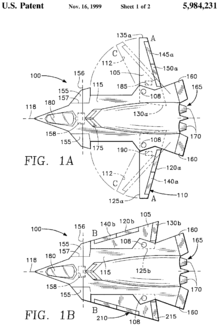Colonial-Marine
UAVs are now friend, drones are the real enemy.
- Joined
- 5 October 2009
- Messages
- 1,470
- Reaction score
- 1,323
I'm just curious as to what others thing is the future (or lack thereof) of this technology? Were the drawbacks and weight penalties greater than the benefits from the start? Does the focus on stealth make it impractical? Or could UAVs bring about a resurgence? Do unconventional configuration as seen on NASA's old oblique wing demonstrator hold promise? Or has this been disregarded as something of a novelty as what seems to have occured with FSW aircraft?
The last (American) military concepts I've seen with such a configuration were Lockheed's NATF, A-X, and A/F-X concepts. While impressive, I can't help but think such a combination of stealth and variable sweep would be horribly difficult and costly to maintain. I can't think of any recent civil aviation proposals with variable sweep wings.
The last (American) military concepts I've seen with such a configuration were Lockheed's NATF, A-X, and A/F-X concepts. While impressive, I can't help but think such a combination of stealth and variable sweep would be horribly difficult and costly to maintain. I can't think of any recent civil aviation proposals with variable sweep wings.

